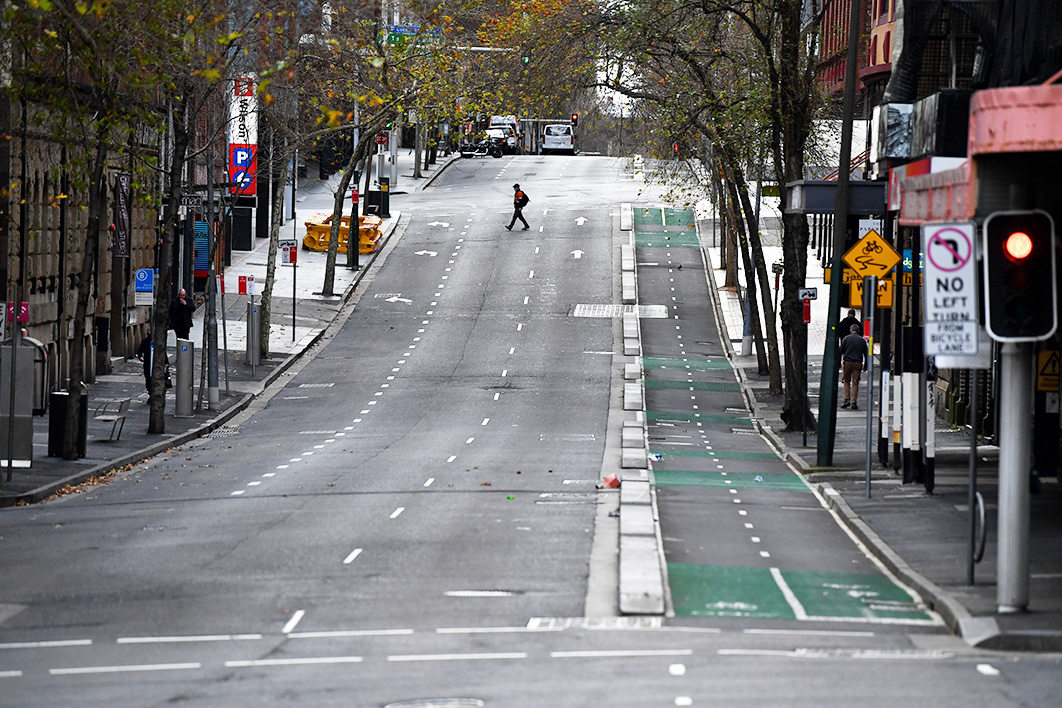Lockdowns were the measure Australia relied on early in the pandemic, while the world was trying to work out how to respond to Covid-19. We handled the first wave so well that we eliminated the virus.
Over time, though, lockdowns took on a life of their own. Victoria locked down for 112 days in the second wave, and then circuit-breaker lockdowns proliferated across the country, sometimes triggered by a single quarantine worker in the community regardless of any evidence of transmission. We didn’t just want to flatten the curve; we wanted Covid-zero.
In Victoria, the second wave quickly followed the first, after the first of many crossovers from returned travellers in quarantine. Cases reached a daily average of 150 before restrictions were again introduced. But this outbreak was different: the virus had made its way into workplaces, healthcare facilities and aged care accommodation and would be harder to contain. Contact tracing systems that had barely been tested were quickly overwhelmed.
Masks were introduced progressively across Victoria from late July, and Monash University modelling has since shown that they were the game changer, reducing transmission by 40 per cent. Nonetheless, with daily case numbers high, Victoria’s health department moved to more extreme stage four restrictions, including movement limits, night curfews and the “ring of steel” around Melbourne.
Why didn’t the lockdown work as expected in the second wave? As it turns out, it was merely holding transmission potential extremely low in the community while the virus was being fuelled by outbreaks in essential workplaces and healthcare. New South Wales is following the same pattern now, with sufficient low-level spread between workplaces and households to keep the outbreak alive. Without this reseeding, both waves might have died out within weeks.
As Victoria moved further into the second wave, restrictions continued to tighten. We are yet to see any formal evaluation of the various steps into and out of lockdown in Victoria, which would identify what worked then and what might work in the future. Instead, we keep reverting to the same style of lockdown as if one size fits all.
Apart from Adelaide’s first circuit-breaker, rapid short lockdowns have been triggered by concern over new variants brought in by returned travellers. With the Alpha variant, first referred to as the UK strain, we were almost back at square one, facing an infectious agent that we were still coming to understand and erring on the side of caution to close down an outbreak before it had even started. But we did learn that our usual test, trace and isolate approaches still worked against the new variant. Because it was 50 per cent more infectious, we just needed to be more meticulous and efficient.
Many were surprised when potential outbreaks in Brisbane and later in Perth fizzled out with little or no community transmission. But Alpha, like its ancestral strains, spreads in fits and starts. Only 10 to 20 per cent of cases are responsible for the majority of the next generation of spread, with the rest infecting either no one, or just a small number of close contacts. Having quickly been deemed successes, these lockdowns were used as a model without any formal evaluation to guide when, how and where they should be used.
Then came Delta, which is twice as infectious and appears to travel faster than our contact tracing. A person can become infectious within forty-eight hours of exposure to an infectious case — in one documented instance, as little as thirty hours. With transmission occurring despite early identification of the threat and strict responses, we have seen four states and the Northern Territory head into lockdown.
By Wednesday this week, New South Wales had 2574 cases linked to its active Delta outbreak, with Victoria on 198 and South Australia nineteen. Initially New South Wales dealt well with the outbreak, which was discovered within the first few days after a major spreader event at Bondi Junction Westfield. But although contacts were traced quickly, many had already been infectious for a day or so. (This fits with data from China, where Delta cases typically have become infectious two days sooner than for earlier strains.)
When the same pattern was seen in Victoria, lockdown was introduced six days earlier in the cycle. South Australia acted with even more haste.
This latest series of June–July lockdowns highlight how inconsistent we remain. Some jurisdictions emulate others, some use their own design. Early action is clearly the key, so we once again find ourselves considering lockdowns as a first line of defence at the first sign of Delta in the community.
Until enough of us are vaccinated to take the pressure off contact tracers, this is likely to be our unpredictable path for a few months yet. But we can at least urge health departments to evaluate each lockdown in order to guide tailored, consistent and above all evidence-based measures. •




